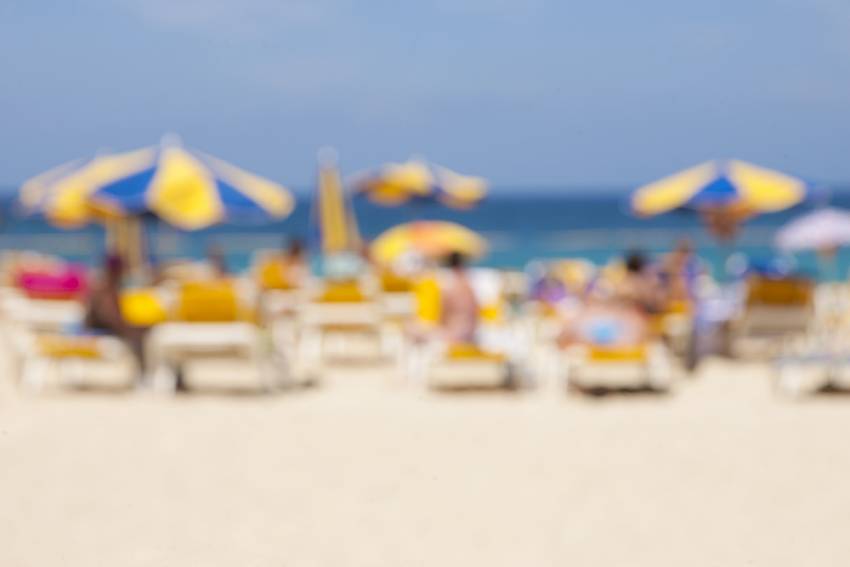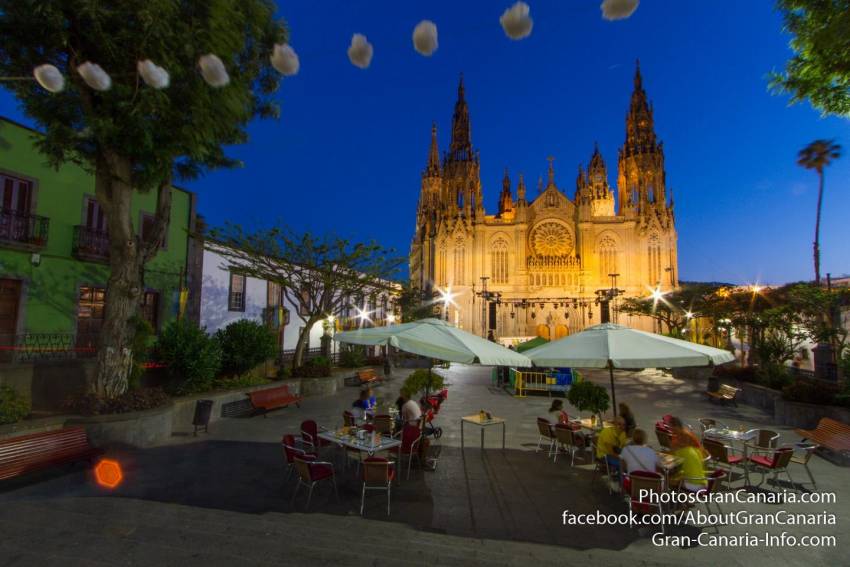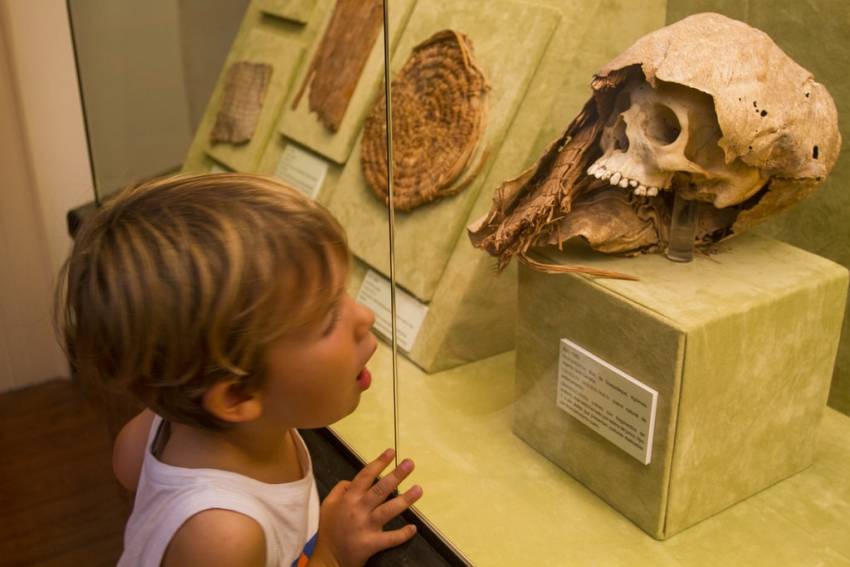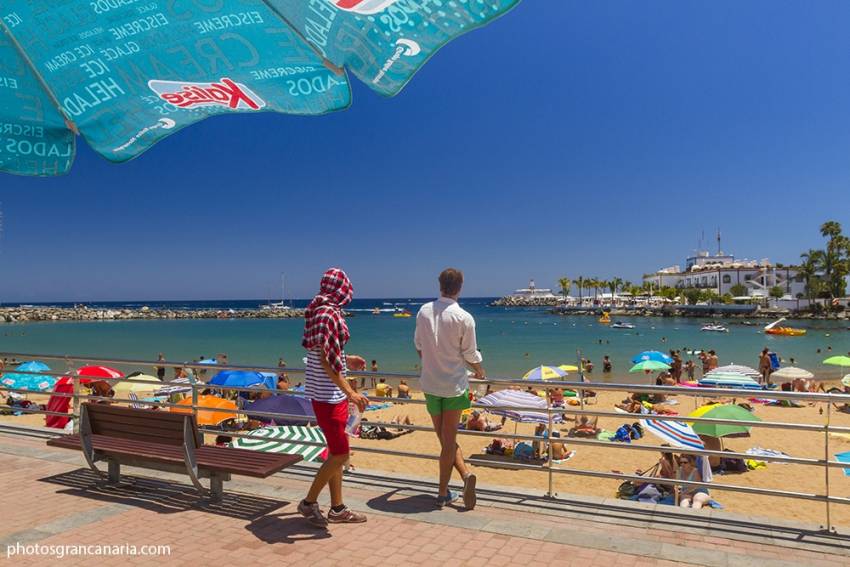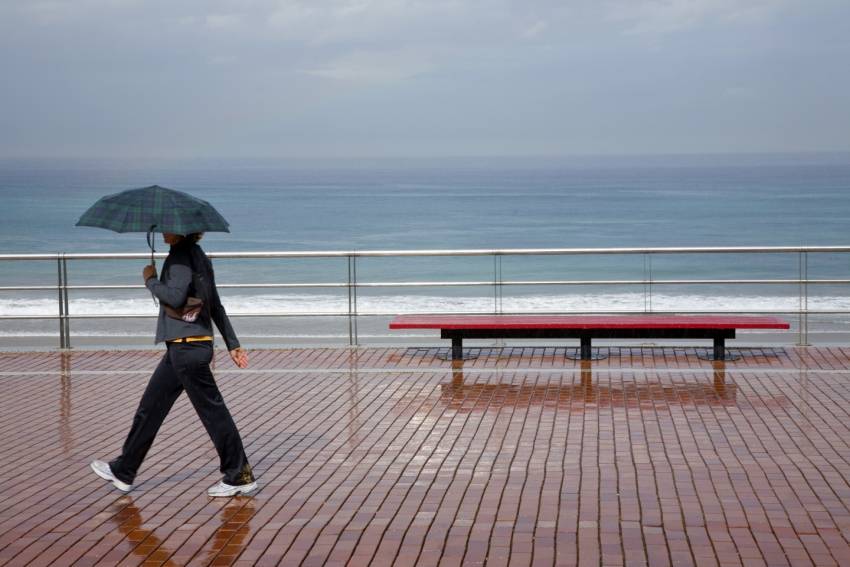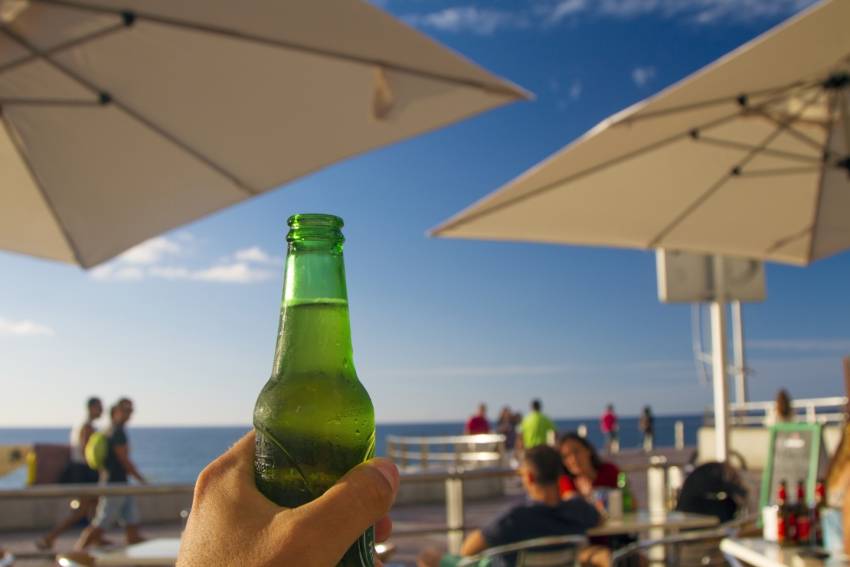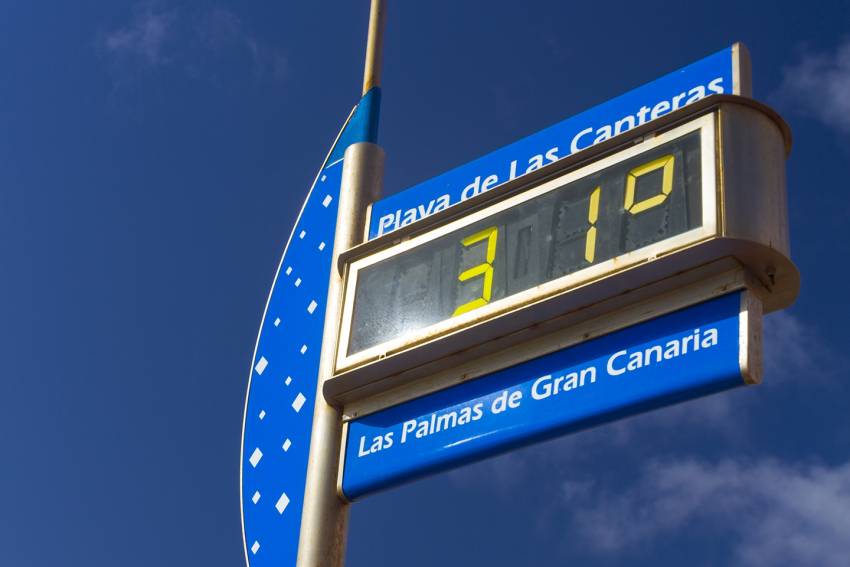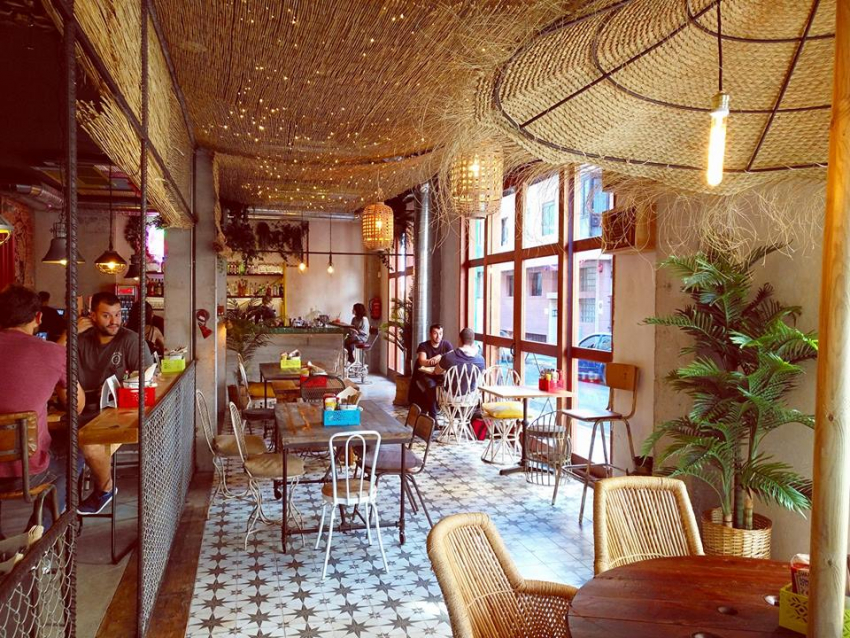Style Guide: How to write appallingly about Gran Canaria (or anywhere else)
We read dozens of articles about Gran Canaria every week. Most of the time it hurts. In fact, you've got more chance of finding an original piece about the island as you do of finding a Canarian in the Puerto Rico Shopping Centre.
Enough is enough.
We've decided to kill the cliché and murder the tired metaphor so we've put our heads together and set the bar high:
Here's our style-guide for Gran Canaria Info articles.
By the way, if we break our own rules, please feel free to shout at us.
The essential clichés
No article can be published without one of the following insightful themes:
Starting with a pun on the island's roundness
Saying it's like Spain but different
Setting out to explore the other, real, Gran Canaria
Revealing that it's an island of contrasts
Mentioning the tourist bight, sprawl, plague, etc, within two sentences
Referring to Gran Canaria as la Isla Bonita (that's La Palma)
Discover Stuff: You're an explorer
To write in an original way you must discover a secret beach, explore a hidden valley or scale a rugged peak. Seeing the resorts and popular beaches with a fresh eye isn't worth considering. Do not under any circumstances focus on details but rather always try to cram the entire island into 400 words.
Do stay in a resort and explore the rest of the island in a day on a Jeep Safari. You'll see it all. In your article only mention the day out.
Scrape the surface: Make as little effort as possible to find anything interesting during your visit. If you must delve, delve into Google.
Unique and wonderful vocabulary
Go heavy on the word unique. Use it at least every sentence and don't both to explain why anything is unique: The readers already know. If you think you're using it too often just switch to 'perfect'.
Fascinating, gorgeous, wonderful, incredible, amazing, picture postcard perfect, etc are also perfectly viable alternatives. All other describing words are redundant.
Use the words traditional and sustainable at least once per article. It doesn’t matter where: Just get them in. Combined with “perfect example of” they get you double points.
The word nice is due for a revival: Use it often as it makes your prose incisive.
The word literally is free. Slap it on the page.
Use words like impart, integrated, intense: Any word that you don't use in everyday conversation makes you sound clever. Better still, combine several beginning with the same letter in one phrase: Alliteration is always fun.
Help us get the word amazeballs off the Twittersphere and into quality prose. The world needs it.
English is too short: Make sure you puff out your prose with lots of wills, woulds, shoulds, coulds, can.
The active voice is nasty. Passive is always the way to go.
Mince the metaphor, crunch the cliché
In the lively resorts, hotels perch, pools are situated, you hit the sun-drenched beaches along with hordes of tourists, cash is splashed, the Yumbo is nudge, nudge, wink,wink (insert funny joke).
Off the beaten track the mountains float in the air above you, remote villages nestle quaintly, views are panoramic and breathtaking, markets and fiestas are colourful and vibrant and full of friendly locals.
Food is always succulent, mouth-watering and delectable. You stumble upon charming local restaurants that are always hidden gems.
Facts get in the way
Facts are so yesterday. Only check yours by referencing other articles found on Google. Get at least one basic fact per article so wrong that it makes the reader's teeth grind. It makes your words memorable.
Locals, what locals
There are no local people in Gran Canaria except friendly ones dressed up in traditional costume dancing charmingly at authentic local fiestas. If you must mention a local in any other context, make sure it's a barman with a dodgy accent.
Narrate to irritate
Refer to yourself in the third person. It's what the queen does and if its good enough for German pensioners, then it's good enough for you.
You need a nickname. Pick one that nobody has ever called you for real authenticity.
Tell the reader all about yourself. They care more about you than about the destination. Include lots of personal details that are unrelated to the content. Blurry photos of your family get you noticd on social media.
Engage with the audience
Beg for likes on social media: People will admire your determination
Post a link repeatedly just in case somebody missed it the first 23 times.
Join a web ring, blog ring, book club or any other network dedicated to sharing each other's content. Promote your buddy's irrelevant content to your audience.
Change the title of your old stuff and repost it as new. Do this often and without warning.
Photos are essential: Include blurry, cloudy and downright terrible ones to boost your reach. If your camera is broken use one of the 10 free photos available on Flickr or Creative Commons. Or steal from the internet: Never credit the photographer.
Want to submit a guest post to Gran Canaria Info? Please use the above as a guide and include plenty of links to your online casino or Viagra shop. We'll definitely publish it on the front page.
Arucas: Bananas, Rum and a Giant Church
Arucas town is famous for its colossal Gothic church built with bug money (see below). Oh, its also got a rum distillery and one of the best preserved town centres on the island.
From Magma to Spaniards: A Brief History of Gran Canaria
Gran Canaria startede under the ocean and that's the way it'll end up. In the m,eantime, it's had a pretty eventful history.
The Economy: Boom Bust and Sunshine
From prehistoric times Gran Canaria's economy has depended on turning the sunshine into things to sell to passing ships. As demand went up and down for what the island grew, it experienced booms and busts: It's why the cathedral in Las Palmas took hundreds of years to finish.
Even before the Spanish it's likely that the island's original inhabitats traded with passing roman and Phoenecian ships until these disappeared. The Canarii then went through a few lean centuries when they were the main export of the islands: Slavers from Europe and North Africa raided regularly.
Crops
At different times large areas of the island were planted with sugar cane, coffee, grape vines, and cactus for cochineal. The Caribbean proved better for sugar production (although rum is still made on the islands), disease put paid to the wine (mentioned by Shakespeare), and artificial dyes destroyed the cochineal trade. Bananas are still a faithful crop but have to compete with cheaper Caribbean imports.
The lean periods saw thousands of Canarians migrate to South America, and especially Cuba and Venezuela. The modern economy of Gran Canaria is based around tourism, and Las Palmas’ huge container port. The island grows bananas, tomatoes, cucumbers and aubergines for the European market and olive oil and coffee are comig back.
Canarian wines and cheese are earning good reputations abroad. Gran Canarian cheese, particularly goat and sheep cheese from Guia in the north, regularly wins international awards. Gran Canarian wine is a mixed bag: The whites are excellent but the reds still lag behind vintages from Tenerife and Lanzarote.
Tourism
Catering to tourists dwarfs all other economic activities in Gran Canaria: Over three million visit Gran Canaria every year. The huge majority stay in the tourist resorts along the south coast.
Tourism is now the islands largest industry and its biggest employer.
What To Do When It's Raining In Gran Canaria
Gran Canaria sells itself to tourists as a sunshine destination where good weather is guaranteed. However, it does have to be wet every now and then or we'd be the Sahara desert. The good news is that there is plenty to do in Gran Canaria on the odd rainy day.
"Horrible" Gofio: The Canary Island Soul Food
Gofio is soul food in the Canary Islands. Most Canarians were weaned on bananas mashed up with gofio and many still eat it every day. It is so tightly entwined with local identity that it is best not not to tell anyone on the islands if you don't like it. At the same time Canarians aren't stupid. They enjoy cake and chocolate and ice cream just like everyone else. They wouldn't eat gofio if it was horrible. Wwould they?
Gran Canaria Oilve Oil: Gold from Sunshine
Gran Canaria is lucky that olive trees live a long time and don't bear grudges. For centuries the island's olivos were used as windbreaks and goat shade, their fruit pickled in mojo sauce or left to rot. Then, about 10 years ago, someone decided to crush a few olives and taste the oil.
Gran Canaria olive oil turns out to be delicious and farmers lucky enough to have olive trees on their land are relearning what their grandparents forgot. Our olives have gone from aperitif to the stars of the table.
Old Trees: New Tricks
There were presses in Gran Canaria in the 16th century so the Spanish must have planted olives as soon as they arrived. Most Canarian trees are old varieties that are rare elsewhere in Spain while one, the Verdial de Canarias, is unique to the islands.
These old cultivars give Gran Canaria olive oil a distinctive flavour: Fruity with a herbal edge like the smell or ripe tomatoes. It also has that peppery after taste that tickles the back of your throat: A classic sign of great olive oil.
Gran Canaria's olive trees grow on terrain too steep for mechanical harvesting so the whole crop is hand-picked. Since 100 kilos of island olives yields only 16.5 litres of oil all production is cold-pressed extra virgin olive oil.
The best Gran Canaria olive oil is sold unfiltered (therefore slightly cloudy) in local markets at 5 euros per 250 ml. You can also buy it in shops in the resorts but expect to pay more. Drizzle your oil on a simple salad or eat with crusty bread to appreciate the flavour. Don't combine it with balsamic vinegar (it's too strong and everyone is sick of the stuff).
Olive Country
There are olive trees all over the south east of Gran Canaria from Telde to San Bartolome but Temisas, between Santa Lucia and Agüimes, is the olive's heartland. The island's oldest olive press is in the village and it was here that the industry restarted. You can't miss the olivos fringing the terraced fields as you come into Temisas, especially if the trees are wearing their white hats in the wind. Bars and shops in the village sell the oil.
More To Olives Than Oil
So far the olive boom hasn't affected the supply of fresh olives in the markets. They taste horrible unless you cure them but the process is simple and worthwhile. It takes too long to do on holiday but if you live in Gran Canaria take advantage (and congratulations on a fine choice of island).
Look out for fat olives in the markets in November and December, or head to Temisas for the pick of the crop. The best ones are deep purple with a pointy end and soft, creamy flesh. To cure, nick each one with a knife and put them in an empty garafa (big plastic water bottle). Fill with water salty enough to float an egg and leave for two weeks. Then change the water and wait another two weeks.
To check if your olives are cured taste one: If your mouth puckers up wait another two weeks. When they are ready they are as good as the kalamata olives from Greece sold in little tubs in posh London delis. Bung them in mojo if you must, or store in olive oil or salty water before serving them smugly to your friends.
Gran Canaria's ancient olive trees, freshly pruned and fertilized, are standing proud again: The island has found yet another way of turning sunshine into gold.
The Historic Maspalomas Space Station Has Saved 10,000 Lives
The Maspalomas Space Station has saved 10,000 lives in 20 years by detecting distress signals from ships and planes. This is on top of its historic part in the Apollo moon landings.
The Maspalomas Space Station, also called the Canary Islands Space Centre, detects signals from distress beacons on ships and planes and from expeditions in remote areas. It then transmits their locations to the relevant emergency services. It is believed to have saved 10,000 lives in the past 20 years. That's more than one person per day!
In December 2012 it picked up a distress signal from a sinking yacht over 500km from the Canary Islands. A Superpuma helicopter saved the crew before the yacht sank, and broke the world record for a long distance maritime rescue at the same time.
Maspalomas and the moon
Started in 1960 as a NASA satellite tracking station it was extended in the 1960s to act as a receiving station for transmissions from the Apollo spacecraft. It was the first place on Earth to receive Neil Armstrong's famous words from the moon in 1969:
"That's one small step for (a) man, one giant leap for mankind"
Maspalomas' role in the moon landings was so important that Neil Armstrong himself visited the island just three months after returning from the moon. He flew to Gran Canaria aboard Air Force One along with fellow moonlanders Michael Collins y Edwin Aldrin and stayed at the Maspalomas-Oasis hotel for three nights.
By all accounts the astronauts had a good time in Gran Canaria even though it rained on their last day. They took a boat trip along the south coast, got on a camel, partied late into the night and enjoyed the food. Armstrong's wife liked mojo sauce so much that she took the recipe home with her.
While in Gran Canaria, Armstrong said that the moon was "a wonderful place, just like Maspalomas. The whole island is amazing".
You can see the receiving antennas of the space station from the roads between Maspalomas and Arguineguin. It is just up the hill from Pasito Blanco harbour. At this time visits are not possible.
Come To Las Palmas For Culture, Stay For Food And Fun
In brochure-land Las Palmas is full or tourists wandering around cobbled streets between museums and galleries. They eat authentic Canarian food, buy arts and crafts, and enjoy themselves in a demure, cultured sort of way without breaking a sweat.
You can do Las Palmas this way if you want: As the first Spanish city founded in the New World, it's gravid with history. It was attacked by cavemen, visited by Columbus, fought off an attack by Sir Francis Drake and got sacked by Dutch privateers. Vegueta is the perfect cultural destination: Compact, well-preserved and full of small, interesting museums. However, there is also a spicier side to the city that you miss if you focus on the past.
Cocktails at sunset
Down at the modern end by the beach, tourism is about catching waves, learning Spanish, scoffing tapas and dancing salsa until you drop. Visitors are discovering Las Palmas as an exciting, modern city with Latino flair. They may wander over to Vegueta to visit Columbus' old haunts but they spend most of their time having fun in the sun.
This alternative scene isn't as new as it sounds. Until the late 1960s Las Palmas was the main tourist destination on the island and the beach was covered in Scandinavians and Brits. After the resorts in the south took off the city went to sleep, resting on its ancient laurels.
Now not then
With millions of cruise ship passengers spending a day in the city, and three million tourist a year on the island for a week or two, Las Palmas has an opportunity to remind people that it is a destination in its own right. But it's not history and architecture that will bring the visitors back, it's today's city with its beach culture, great Spanish food and laid back cool.
We believe that modern Las Palmas is missing a trick by focusing on the city it was 500 years ago rather than the city it is now. Nobody leaps out of bed in the morning because they are excited about visiting a cathedral. But sunset cocktails, tasty tapas, warm sand and Latino rhythm? That sounds like fun!
There are bars by Las Canteras that do the best caipirinhas this side of Copacabana and the streets behind the beach are full of restaurants knocking out quality Spanish tapas. And then there's live music on the beachfront every Saturday, tapas night in Vegueta on Thursdays, carnival, the surf competitions, the marathon, the food and film weekend ... Las Palmas is already happening, it's just that nobody knows about it yet!
It is time for Las Palmas to get its mojo back and remind the rest of Europe that there is a Habana on this side of the Atlantic: That's the sexy Habana with mojitos and rumba by the way, not the Habana of crumbling buildings and long dead heroes.
Overheard in Gran Canaria: Tourist Complaints
Three million tourists come to Gran Canaria every year so we get our share of complaints. While some are legitimate many are caused by people with ridiculous expectations and no knowledge of local culture. Gran Canaria makes a huge effort to please all its guests and most go home tanned and happy. That said, there's no pleasing some people:
Gran Canaria Info recommends:
- Default
- Title
- Date
- Random

